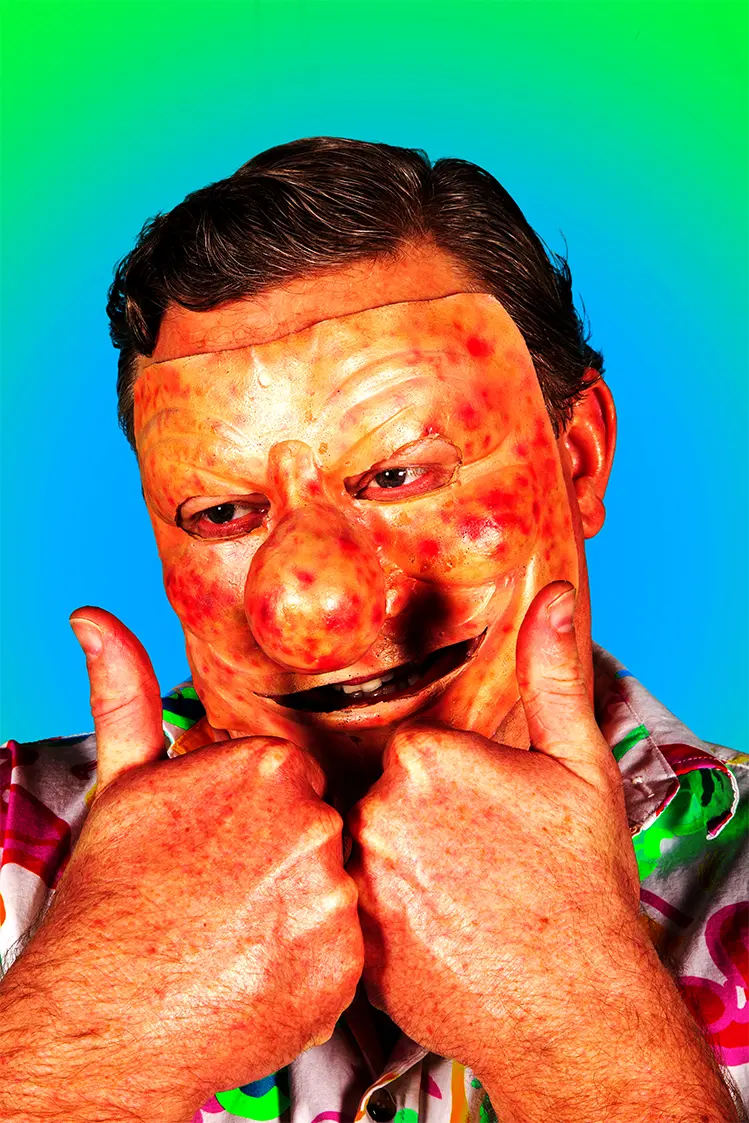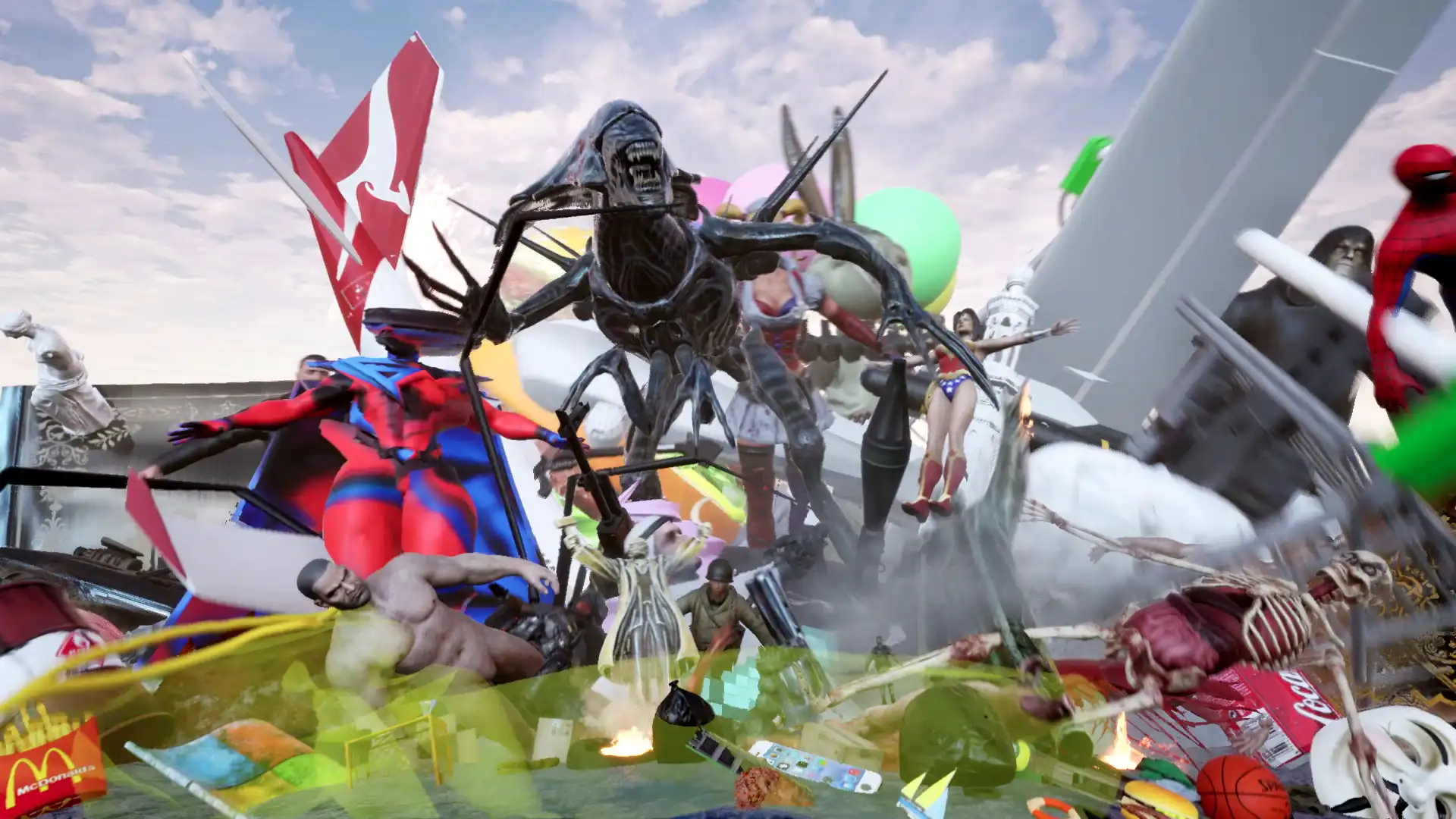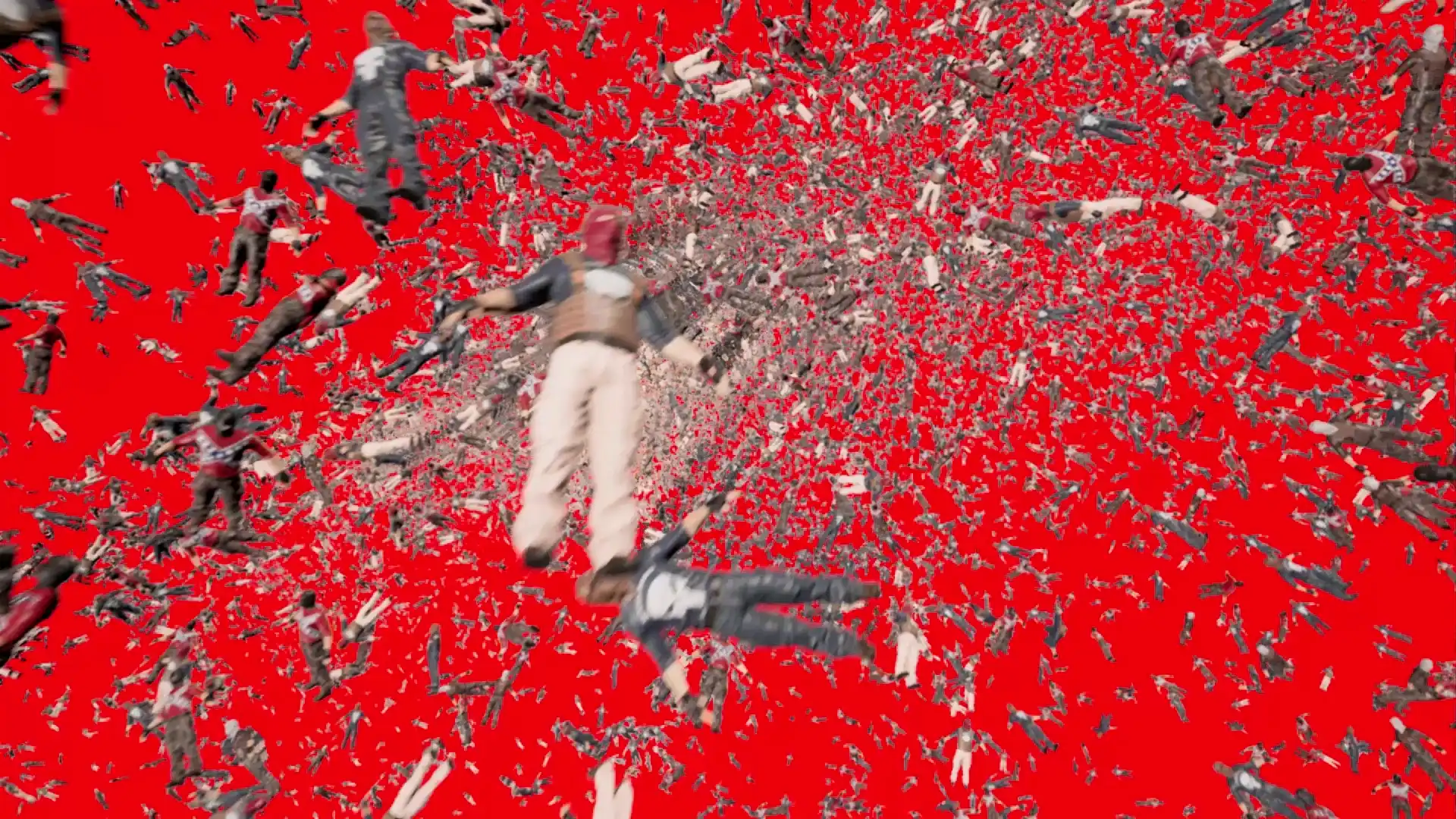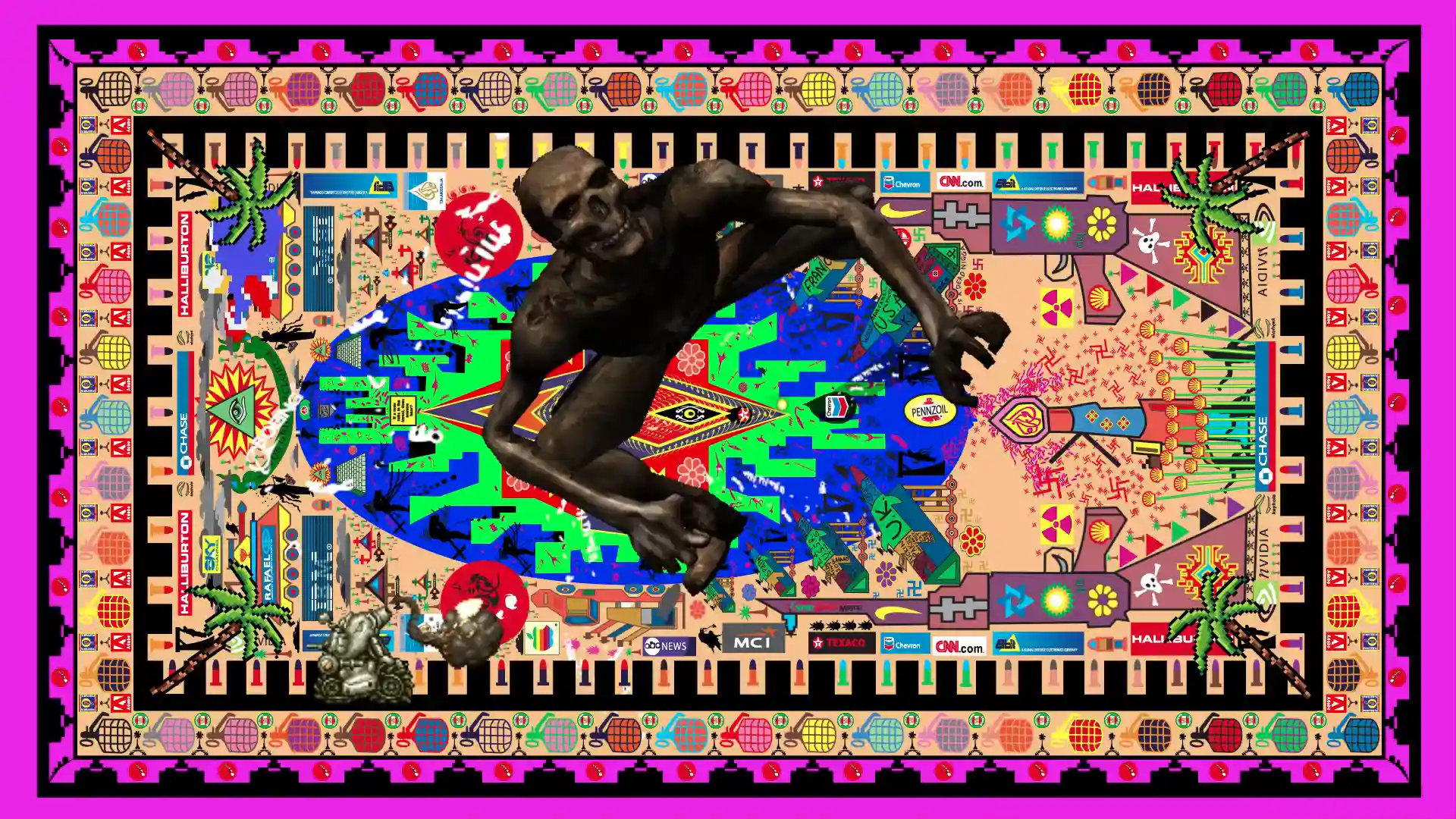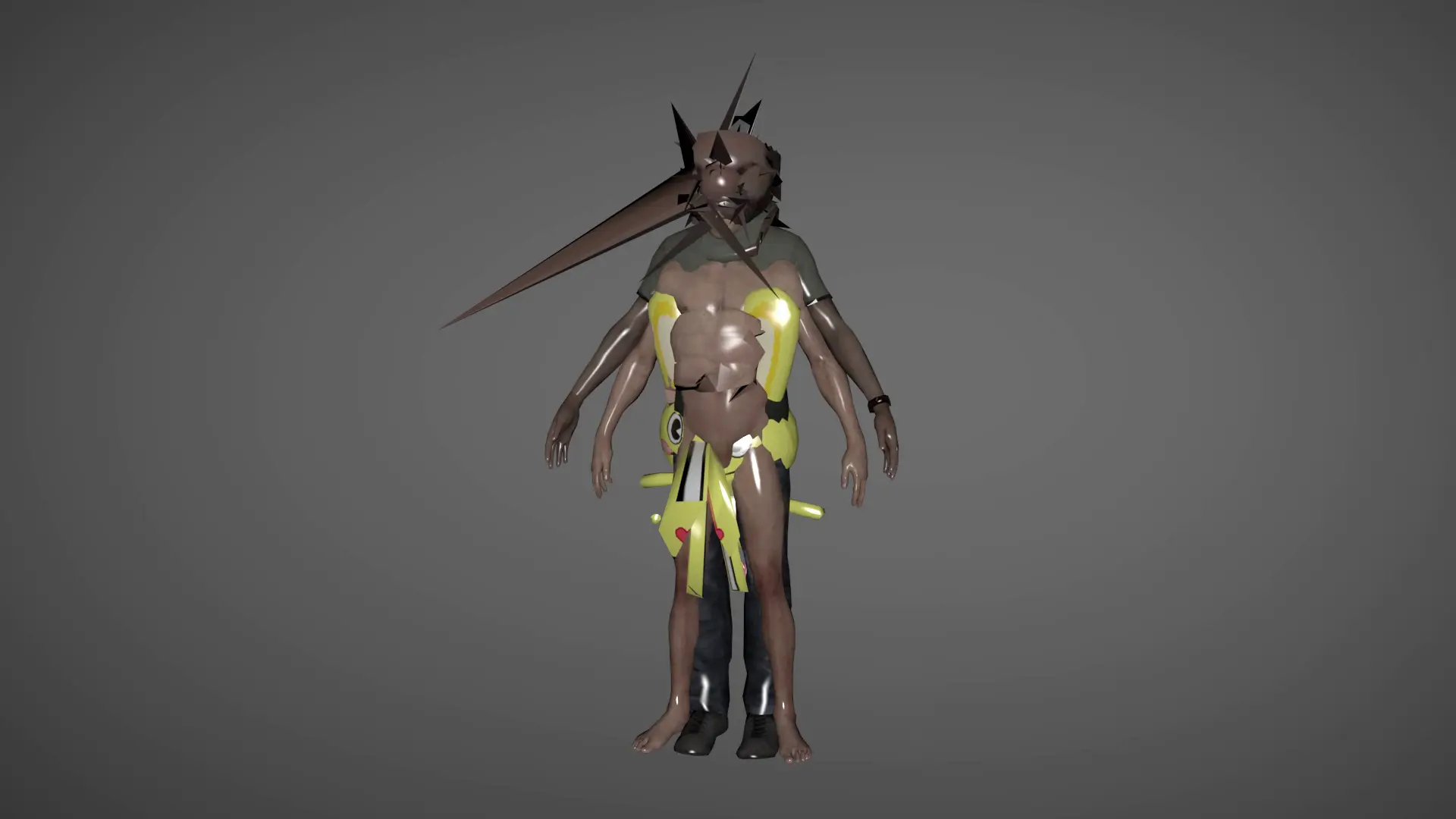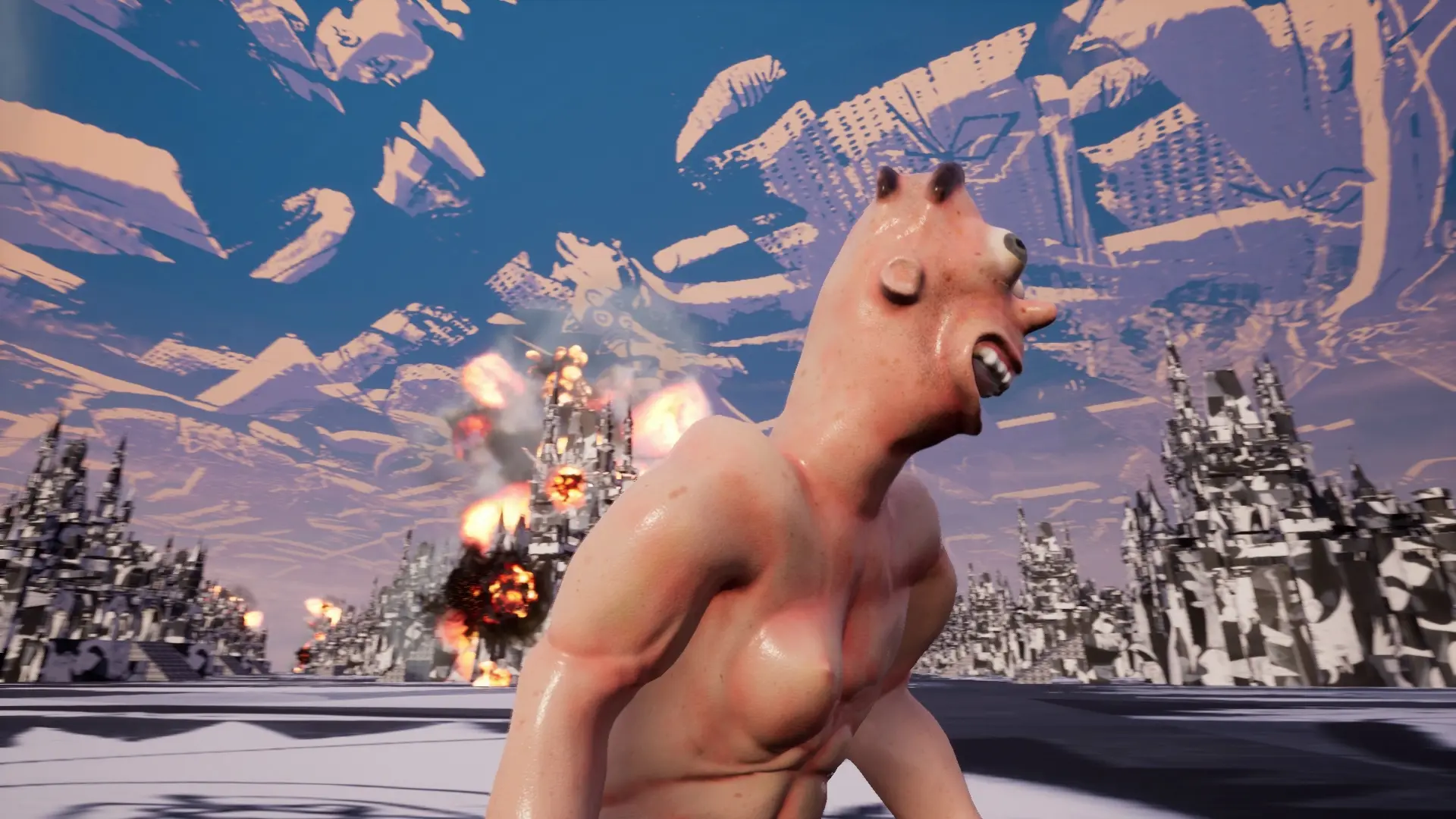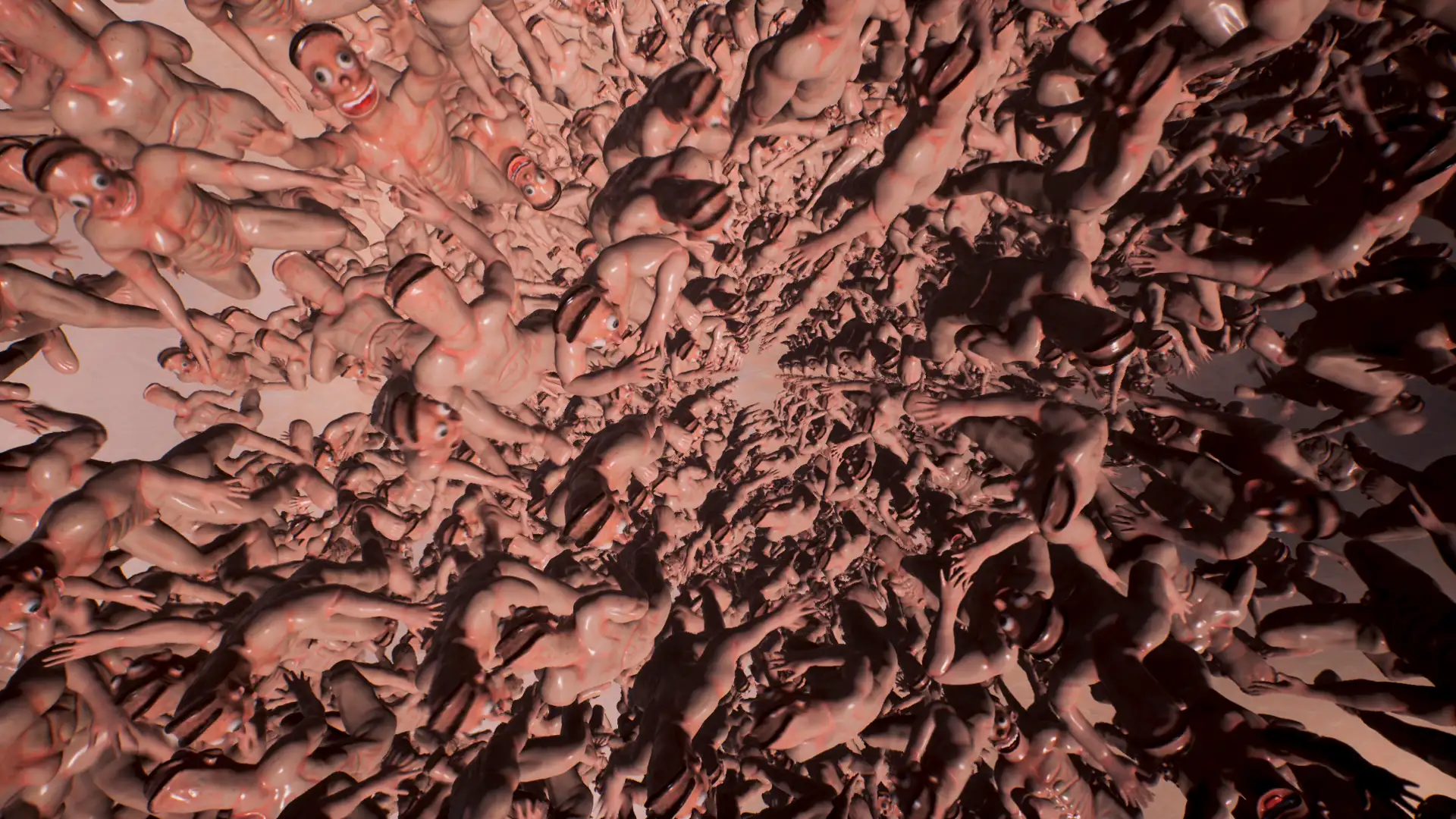CONFRONTING CONSENSUS:
The Art and Politics of Christopher Howlett
Mark Webb and Mark Pennings
The restless Chris Howlett uses his art to energetically pursue a wide range of conceptually and politically focused projects in divergent mediums. He is in fact an exemplary multi-tasker in a post-medium world and has essayed everything from installation, to performance, to sound art, to digital modding with a Quixotic willingness to engage with big themes and issues that would daunt many artists. He is in fact an exemplary multi-tasker in a post-medium world and has essayed everything from installation, to performance, to sound art, to digital modding with a Quixotic willingness to engage with big themes and issues that would daunt many artists.

left: Weapons on the Wall, 2004-05. Installation details. Institute of Modern Art, Brisbane. Photography Richard Stringer. right: Weapons on the Wall: Bart Simpson toy doll, 2004-05. Detail. Yellow acrylic on plastic. Institute of Modern Art, Brisbane. Photography Richard Stringer.
Howlett’s huge appetite for visual art was incubated during his undergraduate and Honours studies at QUT in Brisbane. This unique Australian art school has an open studio model of training based on the conceptual hothouse atmosphere of CalArts. It was then a natural step for the artist to undertake further study at CalArts whose conceptual pedigree was nurtured by John Baldessari and has since been entrenched and intensified by conceptual luminary Michael Asher. This period of study proved to be particularly formative for Howlett (as it did for fellow Samstag Scholarship winner and QUT alumni Jemima Wyman).
It is therefore not surprising that his first major work Hire Me Out, 1999-2000, was a conceptually immersed performance piece. In this work Howlett hired out his services to a number of teachers and students at CalArts. These included Sam Durant who employed his pupil to manufacture a crate to transport artwork to the Blum & Poe art gallery in Los Angeles; Martin Kersels who Howlett helped to prepare a photo shoot for an exhibition at the J. Paul Getty Museum; and Jesse Proksa who hired the artist for a body massage.
These performances typified the art of ‘service aesthetics’, a movement that offered actions such as counselling consultations, hairdressing, and cleaning services to the public. Clients who received these services were not treated like anonymous, standardised mass consumer types. Instead, the services were done gratis so as to enable artists to transcend the commodity diktat that dominates our lives today. Their acts of generosity staked a claim for intimacy, integrity and respect; human emotions that are only of value to capitalism’s instrumental ethos when required for business contacts, or in exchange for a fee.


